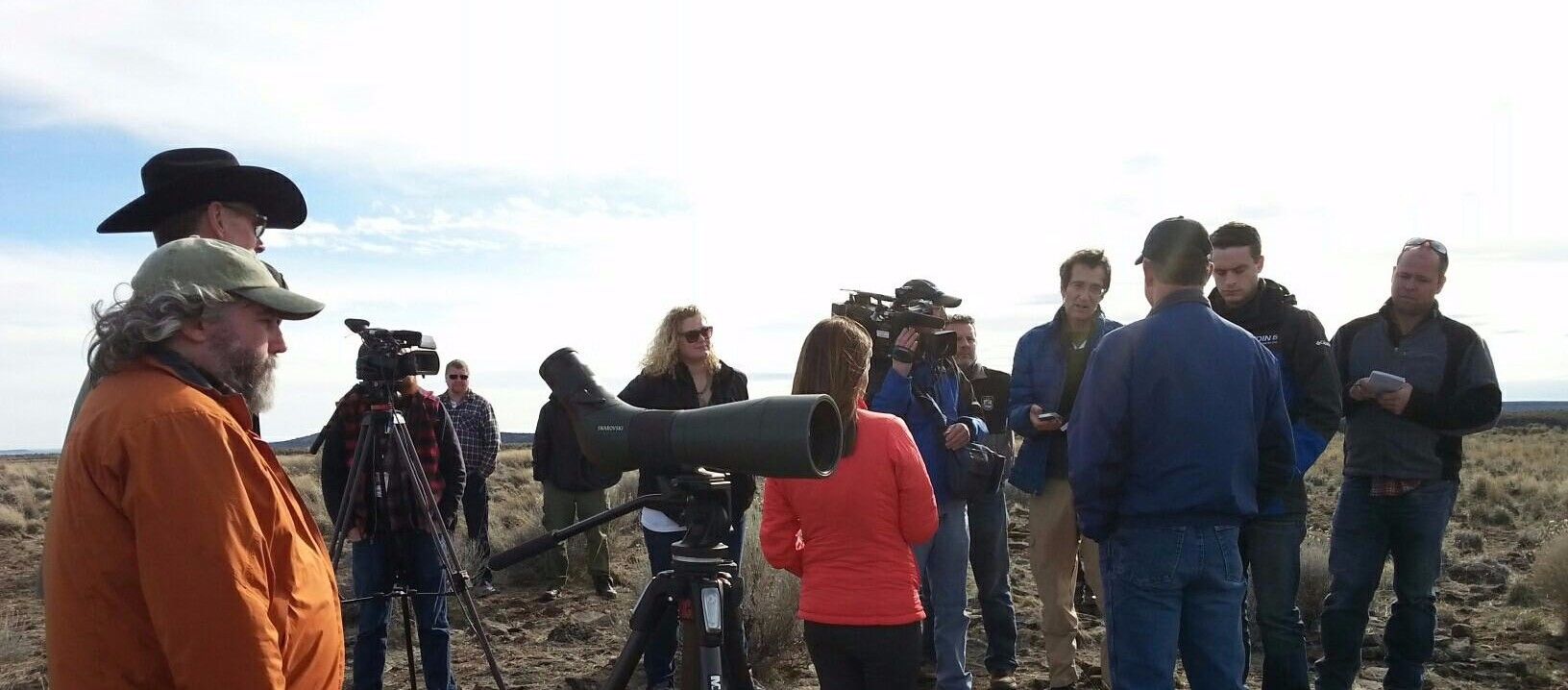A project spearheaded by a landowner working with the Harney Soil & Water Conservation District seeks to restore the Upper Hanley Canal, where cows and wind are causing bank erosion. The project will ultimately improve wet meadow habitat while allowing grazing for a few weeks after the growing season.
The Upper Hanley Canal, which is a ditch connecting the Newman and Foley sloughs, is located seven miles east of Burns off Highway 205. The canal is connected to two large fields that are grazed during the year and provide water for the cows. Cattle access to the canal during the growing season is eroding the banks, which is causing the canal to deepen. As the water drops and the fields dry, excess hoof action on the drying banks causes wind erosion of dried soil and prevents the succession of emergent vegetation.
Braden Morris, SONEC partner biologist with the Harney Soil & Water Conservation District (HSWCD), is working with the landowner on this project that was funded through a $70,000 grant from the Oregon Water Enhancement Board through the Harney Basin Wetlands Collaborative’s latest round of Focused Investment Partnership funding. HSWCD is an active participant of the Harney Basin Wetlands Collaborative.
Part of the project involves wildlife friendly bank fencing on the southern Hanley Canal shore and the west side of the east fork of the Silvies River. The project will also provide two new offsite watering locations for cattle. Willows will be planted along the banks of the Hanley Canal and Foley Slough. Outcomes from the project will include willow establishment along Hanley Canal, instream emergent plant establishment, a raised canal streambed through sediment deposits and improvement of the late season standing wet meadow vegetation. Ultimately, the project will improve grazing management while providing wet meadow habitat for nesting grassland birds.
Morris said the project will begin as soon as the landowner, who is doing the work, is ready to begin. “I know it is going to be a little bit difficult this year to tell when he’ll actually get started, but hopefully this summer,” Morris said, acknowledging the difficulties caused by recent flooding. Morris said the project will continue into the fall of 2026 and that once it is completed, there will be monitoring to check that the project is progressing toward its stated goals. Metrics for measurement include looking at the number of willow trees that have survived after three years, establishment of instream emergent vegetation, evidence of instream sedimentation and a raised streambed and improved grazing and late season field vegetation availability.
Morris noted that the landowner was the one who approached the HSWCD about this project, and he hopes other landowners will follow suit. “We get a lot of funding for helping landowners to do certain things, and we’re not just water and soil,” he said.
Morris said that many of the projects the HSWCD is involved with offer multiple benefits for agriculture and wildlife. The Upper Hanley Canal Project, for example, improves grazing for cattle in the summer and fall, while also providing better wet meadow habitat in the spring. Another project the HSWCD is involved in is the Water Conveyance and Dispersal Management Program, (aka ditch cleaning) which helps landowners clear ditches that are clogged and may be preventing water from passing through to another property. “This cleaning program, it’s not just helping one landowner out,” Morris said. Over time it will help other property owners as water moves more easily through the system.
This Water Conveyance and Dispersal Management Program (aka ditch cleaning) also received funding from the Harney Basin Wetlands Collaborative, which received state legislative funds to help keep water flowing through the basin.
Landowners who would like more information about projects like these can call the HSWCD office at 541-573-6446 or contact Josey Wilson, the coordinator of the Harney Basin Wetlands Collaborative at josey@highdesertpartnership.org.

